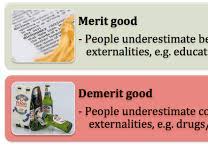


Candidates will explore the reasons for government intervention in individual markets, the methods of intervention deployed, the advantages and disadvantages of the methods and their effectiveness.Candidates will also consider why market economies create income and wealth inequality, and will evaluate the strengths and weaknesses of policies designed to redistribute income and wealth. The key concepts that support these topics are: the margin and decision-making; efficiency and inefficiency; the role of government and the issues of equality and equity.
3.1 Reasons for government intervention in markets
3.1.1 addressing the non-provision of public goods
3.1.2 addressing the over-consumption of demerit goods and the under-consumption of merit goods
3.1.3 controlling prices in markets
3.2 Methods and effects of government intervention in markets
3.2.1 impact and incidence of specific indirect taxes
3.2.2 impact and incidence of subsidies
3.2.3 direct provision of goods and services
3.2.4 maximum and minimum prices
3.2.5 buffer stock schemes
3.2.6 provision of information
3.3 Addressing income and wealth inequality
3.3.1 difference between income as a flow concept and wealth as a stock concept
3.3.2 measuring income and wealth inequality:• Gini coefficient (calculation not required)
3.3.3 economic reasons for inequality of income and wealth
3.3.4 policies to redistribute income and wealth:• minimum wage• transfer payments• progressive income taxes, inheritance and capital taxes• state provision of essential goods and services
Get this resource as part of a bundle and save up to 47%
A bundle is a package of resources grouped together to teach a particular topic, or a series of lessons, in one place.
Something went wrong, please try again later.
This resource hasn't been reviewed yet
To ensure quality for our reviews, only customers who have purchased this resource can review it
to let us know if it violates our terms and conditions.
Our customer service team will review your report and will be in touch.